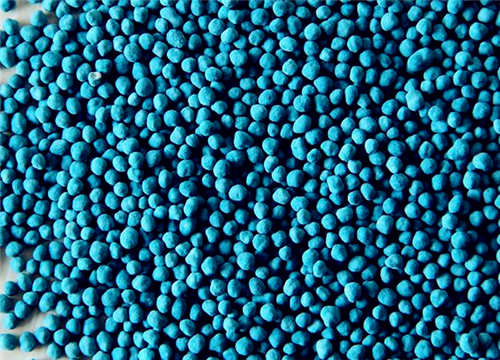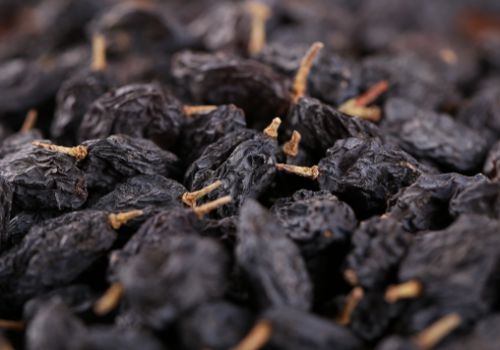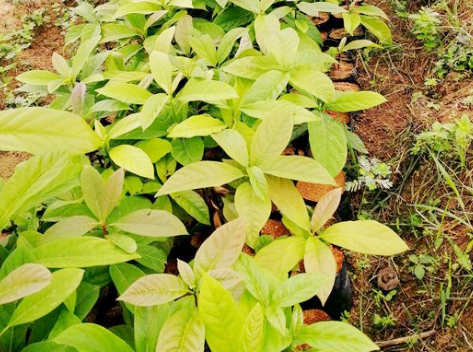How much is the price of Dichondra seeds per jin? Detailed introduction of planting methods!
If we say Dichondra repens, many people do not know what it is, but when it comes to small money grass, many people will say that it is it. Yes, Dichondra, also known as Dichondra, is a kind of herbal medicine often used to treat hepatitis. So how much is the seed price of Dichondra repens now? The planting methods of Dichondra repens are introduced in detail as follows:

1. Introduction of Dichondra repens
1. What's the name of Dichondra?
Dichondra, also known as small money grass, lotus bract grass, meat wonton grass, gold key, copper money grass, small Dichondra, jaundice grass and so on, is a rotational flower family, horseshoe metal plant.
two。 Where are the main producing areas of Dichondra repens?
The main producing areas of Dichondra in China are distributed in the south of the Yangtze River, and widely distributed in Guizhou, Guangxi, Fujian, Sichuan, Zhejiang, Hunan, Taiwan and other places. It can be seen on roadsides, hillsides, grasslands or ditches, and has now been introduced and cultivated artificially.
3. What are the effects of Dichondra repens?
Dichondra has the effects of heat-clearing and detoxification, diuresis, promoting blood circulation and so on. Belongs to the rich Miao folk medicine, has the very good development and the utilization value.
Second, how much is the price of Dichondra seeds per jin?
At present, the price of Dichondra repens seeds on the market is generally about 30-40 yuan per jin, but the corresponding price will be determined according to the quality, variety and origin of the seeds. Of course, the higher the price of seeds with good quality, the higher the price. For you to sort out the latest prices of Dichondra seeds on several websites are as follows:
1. According to the flower species subnet, the latest price of Dichondra seeds is about 40 yuan per jin, and the price will be determined according to the quantity you buy.
two。 According to the China Chemical products Network, the latest price of Dichondra seeds is 2 yuan per jin.
3. According to the China Garden Network, the latest price of Dichondra seeds is 32 yuan per jin.
The latest prices of the above Dichondra seeds are for reference only.
Third, the planting method of Dichondra repens is introduced in detail.
1. Sowing time
Dichondra repens seed sowing is the most suitable for spring sowing from April to May and autumn sowing from September to October. The best sowing time is when the temperature reaches 21 degrees, and the seeds need to be soaked before sowing.
two。 Sowing method
When sowing, sow or sow the treated seeds on the prepared turf bed, rake the seeds to 2 cm, suppress them, cover them with non-woven cloth or straw curtains to increase the temperature and maintain humidity, promote the emergence of seedlings neatly and improve the emergence rate.
3. Planting method
(1) fertilization
Dichondra repens can be fertilized outside the root 15-20 days after planting in spring, urea 5 jin per mu, compound fertilizer 20 jin per mu in March-early April, topdressing again in August-September, calcium superphosphate 100 jin and potassium sulfate 50 jin per mu.
(2) watering
Dichondra likes shade, in order to ensure that Dichondra can also grow luxuriantly in June-September, properly replenish water during the drought period, each watering penetration depth of 10 cm is appropriate, watering should be carried out in the evening.
(3) Diseases and insects
Dichondra repens occurs intermittently and does great harm from June to September. Once it is found that the mixture of dichlorvos EC and dimethoate EC can be used, the spray control effect is the best in the evening.
The above is the introduction of planting methods of Dichondra repens.
Summary: the above content is about the introduction of the seed price and planting method of Dichondra, hoping to help the needy partners. This paper is integrated with the Internet.
Seed price and planting method of Dichondra repens
Horseshoe Dichondra, also known as lotus, golden key, copper grass, etc., is a small perennial creeping herb of horseshoe metal in the family Spirulaceae, which is found in all provinces south of the Yangtze River in China, and its distribution can be called "green carpet". It is suitable for cultivation and appreciation in parks, organs, courtyard green spaces, and can also be used for soil consolidation materials such as ditch slopes, dike slopes and roadsides. Let's take a look at the seed price and planting method of Dichondra repens.
How much is the Dichondra seed per jin?
The price of Dichondra repens seeds is about 3040 yuan per jin, but it varies according to the quality, variety, origin and market of the seeds. Dichondra repens has emerald green leaves, low plants, dense and beautiful leaves, light trampling resistance, strong vitality, strong stress resistance, wide adaptability, low requirements for growth conditions, no need for pruning, and not only ornamental value. it also has the function of fixing soil and protecting slope, greening and purifying the environment. As an excellent ground cover plant, it has been widely used in the north and subtropics of southern China.
Sowing method of Dichondra repens
1. Sowing time: spring sowing of Dichondra repens should be from April to May, and autumn sowing should be from September to October. The best sowing time is when the soil temperature reaches 21 ℃, the sowing rate is 10 ~ 15 g / m2, and soaking the seeds with 50 mg / kg GA for 4 hours before sowing.
2. Sowing method: when sowing, sow or sow the treated seeds on the prepared turf bed, then rake the seeds into the ground by 1cm to 2cm, suppress them, and cover them with non-woven cloth or grass curtains to increase temperature and maintain humidity, so as to promote the emergence of seedlings neatly and improve the emergence rate.
The planting method of Dichondra repens
1. Fertilization: after planting Dichondra repens in spring, 2.5 kg urea per mu, 10 kg per mu, 10 kg per mu, 50 kg superphosphate and 25 kg potassium sulfate per mu can be applied 15 to 20 days after planting in spring.
2. Watering: Dichondra likes shade. In order to ensure that Dichondra can grow luxuriantly from June to September, and the leaf color is normal, water must be properly replenished during the drought period. Each watering depth of 10 cm is appropriate. Watering should be carried out in the evening. Automatic sprinkler irrigation should be used as far as possible.
3. Weeding: Dichondra repens has thin short leaves, strong invading ability and resistance to rough management, but weeds need to be removed when the grass is not fully covered on the ground, and weeds will be pulled out manually on rainy days or after watering.
4. Piercing: after 2-3 years of cultivation, the dense rhizomes of Dichondra repens can easily cause soil consolidation to affect air permeability and water seepage, so it can be pierced according to the situation, or cut off the grass root with a knife to improve the soil looseness.
5. Diseases and insect pests: Spodoptera litura occurs intermittently and does great harm from June to September. Once it is found that 80% dichlorvos EC and 40% dimethoate EC can be mixed into 300 times solution, the control effect of spray in the evening is good.
Does Dichondra repens turf (lawn) need to be mowed? the planting method of Dichondra turf (lawn)
Dichondra repens must be familiar to many people, and it is a common plant in life. Its replacement value and greening function are very good, so it is often used by people to make gardens or lawns. However, when using it to make lawns, many people do not know how to plant and prune. In fact, as long as they master the skills, it is still very simple.
Does Dichondra repens turf (lawn) need pruning?
Dichondra grass does not need to be trimmed. Dichondra repens has green leaves, low plants, dense and beautiful leaves, light trampling resistance, strong vitality, strong stress resistance, wide adaptability, low requirements for growth conditions and no need for pruning. Dichondra not only has ornamental value, but also has the function of fixing soil and protecting slope, greening and purifying the environment. As an excellent ground cover plant, it has been widely used in the northern subtropics of southern China.
Planting method of Dichondra repens turf (lawn)
1. Sowing time: spring sowing of Dichondra repens should be from April to May, and autumn sowing should be from September to October. The best sowing time is when the soil temperature reaches 21 ℃, the sowing rate is 10 ~ 15 g / m2, and soaking the seeds with 50 mg / kg GA for 4 hours before sowing.
2. Sowing method: when sowing, sow or sow the treated seeds on the prepared turf bed, then rake the seeds into the ground by 1cm to 2cm, suppress them, and cover them with non-woven cloth or grass curtains to increase temperature and maintain humidity, so as to promote the emergence of seedlings neatly and improve the emergence rate.
Management skills of Dichondra repens after planting
1. Fertilization: after planting Dichondra repens in spring, 2.5 kg urea per mu, 10 kg per mu, 10 kg per mu, 50 kg superphosphate and 25 kg potassium sulfate per mu can be applied 15 to 20 days after planting in spring.
2. Watering: Dichondra likes shade. In order to ensure that Dichondra can grow luxuriantly from June to September, and the leaf color is normal, water must be properly replenished during the drought period. Each watering depth of 10 cm is appropriate. Watering should be carried out in the evening. Automatic sprinkler irrigation should be used as far as possible.
3. Weeding: Dichondra repens has thin short leaves, strong invading ability and resistance to rough management, but weeds need to be removed when the grass is not fully covered on the ground, and weeds will be pulled out manually on rainy days or after watering.
4. Piercing: after 2-3 years of cultivation, the dense rhizomes of Dichondra repens can easily cause soil consolidation to affect air permeability and water seepage, so it can be pierced according to the situation, or cut off the grass root with a knife to improve the soil looseness.
5. Diseases and insect pests: Spodoptera litura occurs intermittently and does great harm from June to September. Once it is found that 80% dichlorvos EC and 40% dimethoate EC can be mixed into 300 times solution, the control effect of spray in the evening is good.
Disease control of Dichondra repens
1. Rust disease. The main symptom of Dichondra rust is the formation of reddish-brown powdery sores or stripes on stems and leaves, and then turn dark brown. Generally in April, rust begins to spread, and disease spots first appear on the leaves, which expand to the whole plant in summer, which can wither the lawn and kill a large area in severe cases.
Prevention and treatment: when Dichondra repens rust, you can avoid applying nitrogen fertilizer in summer. You can also use drug prevention and treatment, spray with 20% triadimefon EC, or spray with 40% carbendazim gel suspension.
2. Sclerotinia sclerotiorum. When Dichondra repens appears Sclerotinia sclerotiorum disease, the main symptoms of the damaged plants are round brown or light brown spots, which become large disease spots with the deepening of the disease, especially the high temperature and humidity in summer, or improper application of nitrogen fertilizer will aggravate the disease. resulting in a large area of alopecia areata.
Prevention and treatment methods: when the disease of Sclerotinia sclerotiorum occurs, the soil of Dichondra repens can be dug out and treated centrally, and 40% pentachloronitrobenzene powder can be used for disinfection and sterilization. Secondly, pay attention to rainy season drainage, when the disease is serious, 75% chlorothalonil wettable powder can be used for prevention and treatment.
Dichondra repens turf will grow better without pruning, and it will have more shape. When planting, it is generally best to sow seeds in spring and autumn. It is necessary to strengthen management, timely watering, fertilization and disease control after planting. Only when these are done well can its growth be ensured.
- Prev

Introduction to the planting method of "Natural Nourishing Jiapin" black wolfberry!
Black Chinese wolfberry, also known as sweet Chinese wolfberry, is a kind of natural nourishing product found in recent years. It is becoming more and more popular because of its high medicinal value, nourishing liver and kidney, nourishing essence and eyesight, and its price is relatively high. many growers also want to plant.
- Next

Introduction to the planting method of "forest cream" avocado!
Avocado, also known as avocado, etc., is liked by some people because of its good taste and high nutritional value, which can strengthen stomach and clear intestines and reduce cholesterol. The planting prospect is very considerable, and many growers also want to grow it. Then the editor will introduce the avocado planting method: raising seedlings.
Related
- Fuxing push coffee new agricultural production and marketing class: lack of small-scale processing plants
- Jujube rice field leisure farm deep ploughing Yilan for five years to create a space for organic food and play
- Nongyu Farm-A trial of organic papaya for brave women with advanced technology
- Four points for attention in the prevention and control of diseases and insect pests of edible fungi
- How to add nutrient solution to Edible Fungi
- Is there any good way to control edible fungus mites?
- Open Inoculation Technology of Edible Fungi
- Is there any clever way to use fertilizer for edible fungus in winter?
- What agents are used to kill the pathogens of edible fungi in the mushroom shed?
- Rapid drying of Edible Fungi

